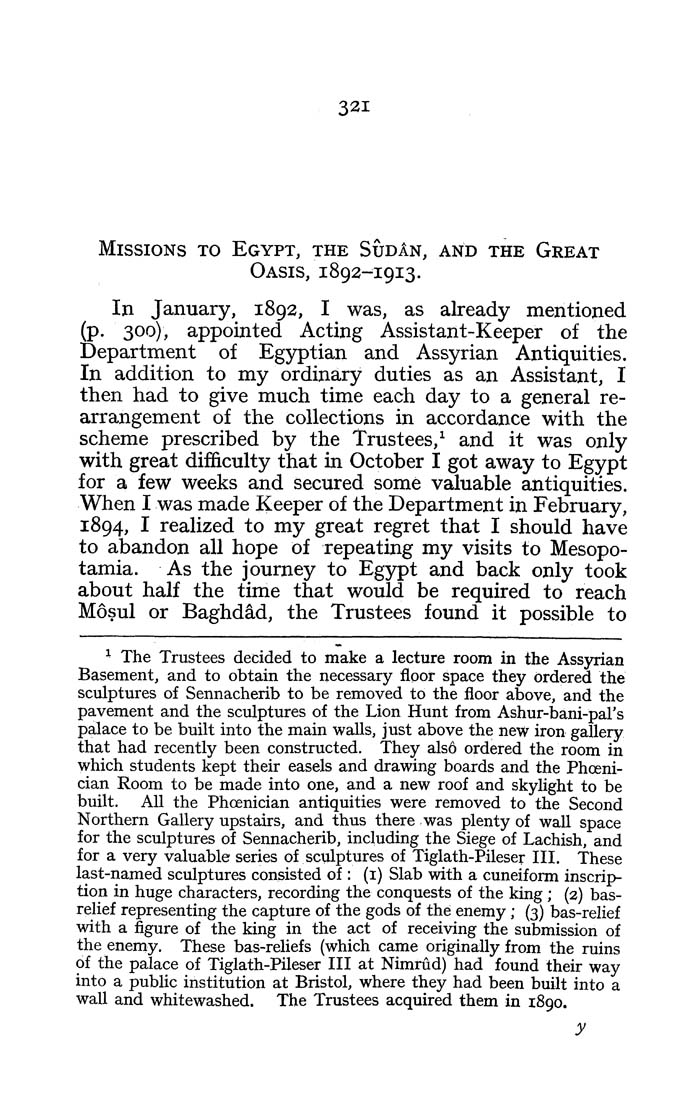321
Missions to Egypt, the SudAn, and the Great
Oasis, 1892-1913.
In January, 1892, I was, as already mentioned
(p. 300), appointed Acting Assistant-Keeper of the
Department of Egyptian and Assyrian Antiquities.
In addition to my ordinary duties as an Assistant, I
then had to give much time each day to a general re¬
arrangement of the collections in accordance with the
scheme prescribed by the Trustees,^ and it was only
with great difficulty that in October I got away to Egypt
for a few weeks and secured some valuable antiquities.
When I was made Keeper of the Department in February,
1894, I realized to my great regret that I should have
to abandon all hope of repeating my visits to Mesopo¬
tamia. As the journey to Egypt and back only took
about half the time that would be required to reach
Mosul or Baghdad, the Trustees found it possible to
^ The Trustees decided to make a lecture room in the Assyrian
Basement, and to obtain the necessary floor space they ordered the
sculptures of Sennacherib to be removed to the floor above, and the
pavement and the sculptures of the Lion Hunt from Ashur-bani-pars
palace to be built into the main walls, just above the new iron gallery
that had recently been constructed. They alsd ordered the room in
which students kept their easels and drawing boards and the Phoeni¬
cian Room to be made into one, and a new roof and skylight to be
built. AU the Phoenician antiquities were removed to the Second
Northern Gallery upstairs, and thus there was plenty of wall space
for the sculptures of Sennacherib, including the Siege of Lachish, and
for a very valuable series of sculptures of Tiglath-Pileser III. These
last-named sculptures consisted of : (i) Slab with a cuneiform inscrip¬
tion in huge characters, recording the conquests of the king; (2) bas-
relief representing the capture of the gods of the enemy; (3) bas-relief
with a figure of the king in the act of receiving the submission of
the enemy. These bas-reliefs (which came originally from the ruins
of the palace of Tiglath-Pileser III at Nimrud) had found their way
into a public institution at Bristol, where they had been built into a
wall and whitewashed. The Trustees acquired them in 1890.
y
|








